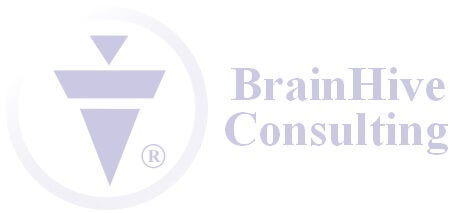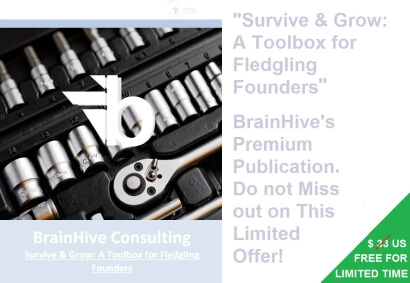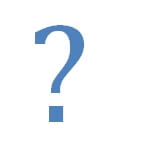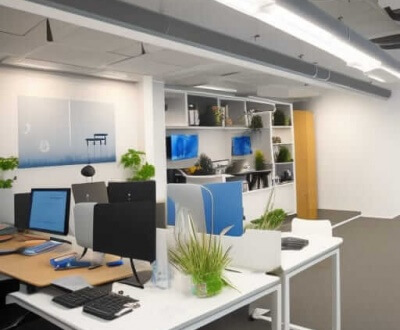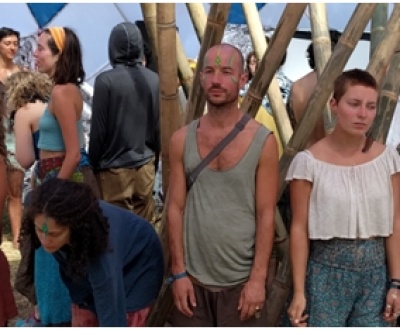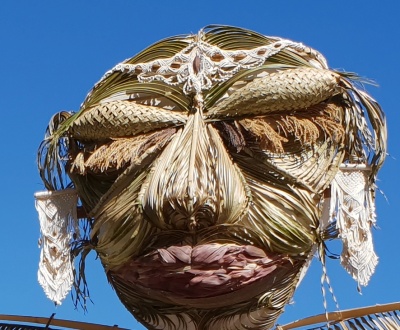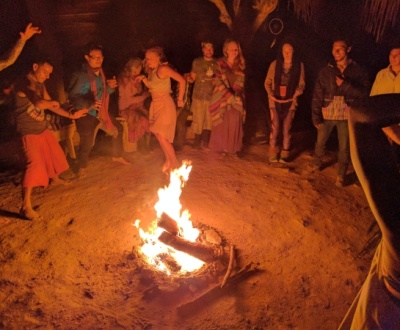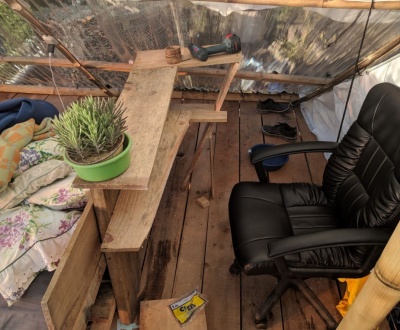Impact Business Planning – Grant Proposal Sample
Grant Writing Sample: Lake restoration project. This grant was written by stellar veteran startup analyst and impact worker Leilani Yats who we met while she was working at Long Way Home project in Saragoza, Guatemala, only about an hour and a half away from the JungleLab Coworking Laboratory.
Project title SAMPLE GRANT PROPOSAL
Mitigating environmental, social and health hazards associated with raw sewage pollution in NGO GRANT WRITING SAMPLE LOCATION through in-situ Water and Sludge Scrubbing via methanogenic archaea cultivation and an innovative and simplified cavitation technology machine.
- Presentation of the organisation running the project
Name of the organization:
Foundation for Eco Development and Conservation – NGO GRANT WRITING SAMPLE ORGANIZATION-
Legal status :
Non-profit organization
Date of creation :
November XXXX
Website :
www.NGO GRANT WRITING SAMPLE ORGANIZATION.org.gt/
Head office address :
NGO GRANT WRITING SAMPLE LOCATION City
Name and email address of the legal representative :
NGO GRANT WRITING SAMPLE MANAGER, GRANT WRITING SAMPLE ORGANIZATION.org.gt
Main expertise/intervention domains :
(water/sanitation/waste management, rural/urban area, geographical zone…)
Nature conservation; watershed management and support to potable water systems; payments for environmental services; Municipal planning; rainwater storage in rural communities; rural and urban sustainable development in NGO GRANT WRITING SAMPLE LOCATION ( Departments of Izabal, , Huehuetenango and NGO GRANT WRITING SAMPLE LOCATION city); sanitation and waste management (in coordination with NGO GRANT WRITING SAMPLE Partner);
TABLE REMOVED
- Project relevance
Context
As in most developing countries, urban growth in NGO GRANT WRITING SAMPLE LOCATION has accelerated exponentially at a rate that undermines the government’s land and environmental management efforts. The metropolitan area of NGO GRANT WRITING SAMPLE LOCATION City, the nation’s capital, now harbors an estimate of X,XXX,XXX inhabitants with a respective density of XXXX,XX hab/km². Accompanying this rapid demographic growth comes an increasing amount of urban and peri urban solid waste and wastewater that cannot be managed by local municipalities. The city’s wastewater sewage system is the remnant of a city of half a million inhabitants, and only a few treatments plants function precariously across the city. Less than XX% of the capital City wastewater is treated, and over XX% of raw sewage is dumped in creeks and rivers. Over XX% of this untreated sewage water – both domestic and industrial- ends up in Lake NGO GRANT SAMPLE LAKE, located less than XX km to the south of the City. Lake NGO GRANT SAMPLE LAKE – once a beautiful mountain lake of volcanic origins- has therefore become one of major sewers of the metropolitan region. An estimated amount of X,XXX litres of sewage water enters the lake each second through the Rio Villalobos watershed, responsible for XX% of the total water flow that enters the lake.
In a few years, if nothing is urgently done, the lake will become a fetid and toxic swamp, an environmental nightmare for millions of local inhabitants. Over the past XX years, often mired in corruption and institutional weaknesses, local municipalities and the central government of NGO GRANT WRITING SAMPLE LOCATION have been unable to tackle this urgent environmental issue. Also, traditional water treatment plants, with expensive capital and operational costs, and requiring highly trained personnel, have proven to be beyond the existing institutional capabilities of local authorities. There are dozens of abandoned water treatment plants scattered throughout the city , often built to comply with licensing permits (and never put into operation) or poorly built as a result of corruption deals and poor supervision.
Recently, NGO GRANT SAMPLE GOVERNMENT NGO, the Authority for the Sustainable Management of the NGO GRANT SAMPLE LAKE Basin and Lake, has focused on recovering up-stream water treatments facilities that were nonfunctional due to bad management practices. Unfortunately, this efforts are not enough to significantly tackle the pollution entering the lake, making every action count in the long run to clean the lake and mitigate its direct impact on the health and well-being of over XX,XXX people living directly around the lake.
This situation can be found in many developing countries,where untreated water is hampering development efforts, harming the health of millions, and destroying vital natural ecosystems, from lakes to reefs, further diminishing sustainable livelihoods opportunities across the planet. It is therefore URGENT and extremely important to develop new and cheaper wastewater treatment technologies that can be affordable, easily manageable and rapidly replicated and deployable across developing countries.
This project is the inspiration of Social Entrepreneur NGO GRANT SAMPLE PROJECT OWNER, who found his new mission when confronted with the tragedy of Lake NGO GRANT SAMPLE LAKE, and left behind his successful business endeavours in order to save Lake NGO GRANT SAMPLE LAKE in partnership with NGO GRANT WRITING SAMPLE ORGANIZATION, one of the largest and most successful Environmental Conservation NGO´s in NGO GRANT WRITING SAMPLE LOCATION.
Through the proposed innovative technology, and in the context of our Lake NGO GRANT SAMPLE LAKE initiative, the project will have the following direct and replicable impacts:
- Health:
- Decrease the health risk associated with highly polluted surface water. In NGO GRANT WRITING SAMPLE LOCATION, XX% of surface water is polluted with fecal coliforms causing the most important causes of child mortality: diarrhea
- Decrease the presence of pathogenic vectors around polluted water bodies.
- Environmental:
- Improve the lake ecological health to boost fish biomass.
- Improve the natural services delivered by the lake to surrounding inhabitants.
- Governance:
- Increase the usage of affordable and non-traditional wastewater treatment technologies in poor regions of the country.
Our Social Entrepreneur: NGO GRANT SAMPLE PROJECT OWNER
In XXXX, NGO GRANT SAMPLE PROJECT OWNER was commercially (and successfully) selling and managing his wastewater treatment technology in hog farms located in the state of Jalisco. Between XXXX and XXXX, the aim of the project was to create a circular water system inside the farm, so wastewater could be recycled decreasing freshwater consumption. Recirculation of the water treated by a cavitation assisted machine resulted in a significant decrease of both water consumption and pollution metrics in the excess water that was then used for irrigation. In XXXX, the project moved to hog farms and palm oil plantation in NGO GRANT WRITING SAMPLE LOCATION, where it showed to decrease significantly the total biochemical oxygen demand of their heavily polluted wastewater.
In XXXX, an invitation by local coffee producers brought to NGO GRANT WRITING SAMPLE LOCATION, were he was confronted to the sad reality of Lake NGO GRANT SAMPLE LAKE. abandoned his commercial endeavour, created a local Association -NGO GRANT WRITING SAMPLE Partner- and later partnered with NGO GRANT WRITING SAMPLE ORGANIZATION – a longstanding and established NGO GRANT WRITING SAMPLE LOCATIONn environmental NGO- in order to launch a Social Enterprise for the rescue of Lake NGO GRANT SAMPLE LAKE. realized that Lake NGO GRANT SAMPLE LAKE has a series of hydrological conditions that allowed for the deployment of the same kind of technology he was using for industrial purposes, in order to treat the pollution entering the lake.
NGO GRANT WRITING SAMPLE Partner launched a pilot project in the Playa de Oro area, located near the Villalobos river delta, achieving the deployment of two treatment machines that successfully operated for XX month, reaching proof of concept and demonstrating the rapidity, efficiency, economy and replicability of the proposed technology. Straightaway, NGO GRANT WRITING SAMPLE Partner began collaborating with NGO GRANT WRITING SAMPLE ORGANIZATION to scale the project through the creation of a Social Enterprise that will first seek to rescue Lake NGO GRANT SAMPLE LAKE, and then launch other pilots in Caribbean NGO GRANT WRITING SAMPLE LOCATION and Belize (in order to support the conservation of the Mesoamerican Reef System).
Objectives
General Objective
To deploy a viable and affordable wastewater treatment system that will mitigate environmental, social and health hazards associated with Lake NGO GRANT SAMPLE LAKE pollution through a Water and Sludge Scrubbing system based on in-situ methanogenic archaea cultivation and an innovative and simplified cavitation technology machine.
Once the Lake NGO GRANT SAMPLE LAKE Project is running, we will disseminate this methodology by manufacturing our machine in NGO GRANT WRITING SAMPLE LOCATION and replicating the project in Caribbean NGO GRANT WRITING SAMPLE LOCATION, Belize City, and other potential and high priority sites across the region.
Our technology will be made available without any intellectual property rights for not-for profit endeavours and initiatives, and will be commercially distributed under for-profit schemes when serving private for-profit businesses.
Specific Objective
- To consolidate the project into a social enterprise that will assist and collaborate with NGO GRANT WRITING SAMPLE ORGANIZATION to promote and develop the Water and Sludge Scrubbing technology in NGO GRANT WRITING SAMPLE LOCATION..
- To start the second phase of the NGO GRANT SAMPLE LAKE pilot, by scaling to X machines in the Villalobos River delta in collaboration with the local municipality of San Miguel Petapa.
- To develop a second generation prototype of the wastewater treatment machine, patent-free (for non-commercial uses) and manufactured in NGO GRANT WRITING SAMPLE LOCATION.
- To seek new partnerships with local Municipalities in Caribbean NGO GRANT WRITING SAMPLE LOCATION and Belize city in order to rapidly replicate the project with a Mission to save the Mesoamerican Reef System.
- Description of your project
- Location:
During its commercial phase, this project proved the viability of simultaneous sludge elimination and wastewater remediation by transforming hog waste into water in two hog farms located in Jalisco NGO GRANT SAMPLE NEIGHBOR COUNTRY. The hog waste is collected in biologically activated storage tanks under each of the hog barns and is periodically flushed into one end of a treatment lagoon while the water with which to flush the barns comes from the other end of the treatment lagoon. These real world hog farms demonstrated a scalable and affordable system to obtain zero discharge hog farms.
The Not-for profit phase of this project was carried out in Lake NGO GRANT SAMPLE LAKE and proved the viability of deploying this technology directly into the lake: During this phase X meters of sludge were “digested” and eliminated, the water was cleaned in the trial site and fish populations recovered in the area (with more fish during the period than there had been in decades).
An ongoing project is monitoring performance of the machines and recording the cost per kg of (COD) pollution reduced in a site that reasonably approximates the conditions of the river Villalobos, which is the sole pollution source of lake NGO GRANT SAMPLE LAKE.
- Describe your project. The solution that you present can be technical, financial, political, organisational, etc.
The project combines existing and novel technologies in such a way as to dramatically lower the costs of reducing sludge and wastewater.
The system is the synergy of different natural phenomena that seek to accelerate and improve the anaerobic digestion process for the treatment of wastewater. Unlike conventional sedimentation aeration systems and lagoons, the system seeks to create the necessary conditions for the in-situ (local) cultivation of natural methanogenic archaea in a system of Direct Transmission Interespecies de Electrones or DIET (for its acronym in English) in order to eliminate accumulated sludge and sediment. This system creates a totally anaerobic environment at the bottom of the lagoon, in which digestion takes place. The system is composed in its simplest model by a Venturi machine tht floats within the polluted lake or lagoon; the reverse rotation (at low efficiency) of the Venturi rotors create a low pressure system that allows a cavitation and sinusoidal wave phenomenon. Cavitation leads to two important phenomena: the release of enzymes and hydrolysis proteins from the wall and membrane of cells that are suspended in the water surface, and the precipitation of free CaX + ions in insoluble calcium carbonate. The formation of this insoluble mineral compound allows the conduction of direct electrons (DIET) between the methanogenic Archaeas and the Geobacter bacteria, the result of which is the formation of CHX (figure X). The formation of the system (DIET) has consequences at the biophysical level in the sedimentation lagoon since, the anaerobic digestion develops without the formation of by-products such as hydrogen sulfide (responsible for the bad smell) and of ammonia. The elimination of sludge is carried out through the constant formation of sinusoidal waves; the constant movement provokes a stretching of the floating organic matter which in turn is partially hydrolyzed. The hydrolysis changes the original polymeric organic matter, such as fats, polysaccharides and proteins into soluble and smaller molecules that are consumed by acid formers / fermentors. These create an ecosystem which enhances methanogenic production and eliminates sludge and HXS.
Furthermore the project will demonstrate and quantify the conversion of sunken algae and wastewater by reducing the resultant sludge into methane energy. The central thesis is, when inventoried sludge is sufficiently plentiful it can be reduced to methane (and pure water) which, in turn, can be harnessed to power wastewater treatment plants thereby breaking the circle of abandoning and building ever more treatment plants. In a second phase, our project will seek to capture this methane to create a fully circular process.
Earlier phases conclusively prove that the system simultaneously remediates wastewater and eliminates sludge:
- In zero discharge hog farms in which hog waste transforms into water which then perpetually cycles between their barns and their treatment lagoon; sludge and wastewater are not discharged into the environment.
- In lake NGO GRANT SAMPLE LAKE, a floating pilot eliminated X m of sludge, cleaned the water, increased fish and eliminated malodor.
As stated above, by adding methane capture to its already proven sludge reduction and wastewater remediation capability, we will create a circular and self sustaining system.
- Project implementation through one or several pilot phases
Duration and action plan
- Describe factually and in detail the project calendar, the different activities launched, etc.
If the project is part of a broader programme, describe how the project fits in with this programme and benefits from its results.
The project is divided in several phase, each one of them responsible for achieving specific objectives that will ultimately achieve the project long term goal, to develop affordable and innovative water treatment technologies in the Lake NGO GRANT SAMPLE LAKE basin, NGO GRANT WRITING SAMPLE LOCATION and all across Central America. The following table explains the project calendar, with its corresponding achieved and planned activities.
| YEAR | |||||||||||||||||||||
| Component | ACTIVITIES | <XXXX | XXXX | XXXX | XXXX | XXXX | |||||||||||||||
| QX | QX | QX | QX | QX | QX | QX | QX | QX | QX | QX | QX | QX | QX | QX | QX | QX | QX | QX | QX | ||
| X | Testing of the technology and zero waste in Hog Farms in NGO GRANT SAMPLE NEIGHBOR COUNTRY | x | x | x | x | ||||||||||||||||
| X. Initiation of the pilot project in Lake NGO GRANT SAMPLE LAKE | X.X Contact with stakeholders and land assessment of the area where the pilot would take place. | x | x | ||||||||||||||||||
| X.X Initial deployment planification of two cavitating wastewater treatment machines. | x | x | |||||||||||||||||||
| X.X Initiation of the pilot project in Playa de Oro. | x | ||||||||||||||||||||
| X.X Monitoring of the pilot project. | x | x | x | x | |||||||||||||||||
| X.X Communication and stakeholder involvement activities. | x | x | x | ||||||||||||||||||
| X.X End of the first phase of the pilot project. | x | ||||||||||||||||||||
| X. Development of patent free (for non-commercial purposes) XD model of a new cavitating wastewater treatment machine. | X.X Planning of new models and drawing designment. | x | |||||||||||||||||||
| X.X XD modeling (FusionXXX) of designed machine. | x | x | x | ||||||||||||||||||
| X.X Correction and approval of XD models by Washington University. | x | x | |||||||||||||||||||
| X.X Printing of a the modeled prototype | x | ||||||||||||||||||||
| X.X Testing of the modeled prototype | x | x | |||||||||||||||||||
| X.X Patenting as Creative Common intellectual property, free to use in non-commercial objectives | x | ||||||||||||||||||||
| X. Phase II of the Lake NGO GRANT SAMPLE LAKE Pilot project in the first lagoon of the Villalobos delta | X.X Stakeholder involvement activities: coordination agreement with San Miguel Petapa Municipality. | x | |||||||||||||||||||
| X.X Deployment and Monitoring planning. | x | ||||||||||||||||||||
| X.X Deployment of X cavitation wastewater treatment machines in the first lagoon of the Villalobos river delta. | x | x | x | x | x | ||||||||||||||||
| X.X Monitoring of the pilot project phase II | x | x | x | x | x | ||||||||||||||||
| X.X Communication and stakeholder involvement activities. | x | x | x | x | |||||||||||||||||
| X. Dissemination and replication | Presentation of the result and the technology to municipalities from the caribbean coast of NGO GRANT WRITING SAMPLE LOCATION and Belize | x | x | ||||||||||||||||||
NGO GRANT WRITING SAMPLE ORGANIZATION´s work in Lake NGO GRANT SAMPLE LAKE is part of a larger multi-year program, for the promotion and establishment of the “Metropolitan Ecological Greenbelt” of NGO GRANT WRITING SAMPLE LOCATION City. In partnership with the FFEM (Fonds Français pour l’Environnement Mondial), NGO GRANT WRITING SAMPLE ORGANIZATION is seeking to create a network of metropolitan ecological parks around and within NGO GRANT WRITING SAMPLE LOCATION City. Lake NGO GRANT SAMPLE LAKE is a vital component of the Metropolitan Greenbelt, and is a high priority in our vision for a “Green and Sustainable City”.
This project seeks ultimately to promote affordable wastewater treatment technologies to public authorities in precarious areas of the country and Central America, starting in the caribbean region of NGO GRANT WRITING SAMPLE LOCATION, for the protection of the Mesoamerican Reef System. This project will be a step forward in the partnerhip between NGO GRANT WRITING SAMPLE ORGANIZATION and NGO GRANT SAMPLE PROJECT OWNER for the protection natural water resources, and will be a cornerstone of the water management in NGO GRANT WRITING SAMPLE LOCATION for the next five to ten years.
- Project resources
Human resources of the applicant organisation
- Briefly present the team involved in the project (composition, organisation), its skills and experiences (how are they coherent to the project you are undertaking). Provide references, potential skills in the water services’ activity, sanitation or waste management in developing countries, experience in the project’s geographical area, etc.
Illustrate how your experience (and that of your team) provides credibility to your project (references, expertise in water services, sanitation or waste management in developing countries, experience in the geographic area of the project, etc.).
- NGO GRANT SAMPLE PROJECT OWNER, Leading Social Entrepreneur, will be the CEO of our Social Enterprise, and will be our Project Coordinator.
- NGO GRANT WRITING SAMPLE MANAGER, General Director of NGO GRANT WRITING SAMPLE ORGANIZATION; will lead communication effforts with local municipalities, NGO GRANT SAMPLE GOVERNMENT NGO, and the Ministry of the Environment. is a leading NGO GRANT WRITING SAMPLE LOCATIONn Environmentalist, President of the NGO GRANT WRITING SAMPLE LOCATIONn Association of Environmental NGO´s, and and member of the Global Council of IUCN. He has more than XX years of work experience in environmental work in NGO GRANT WRITING SAMPLE LOCATION and Central America.
- NGO GRANT SAMPLE MANAGER, Business Development; Graduated from Robert NGO GRANT SAMPLE MANAGER University with a Masters in Business Management. Although her experience lies primarily in Business Development with Silicon Beach start ups, she left the industry in XXXX to blend her professional experience with her environmental sustainability passions. Most recently part of the Pop Up Foundation, an international NGO focused on permaculture, natural building, regenerative living, and global community. helped coordinate the launch of their South Australia chapter and is currently assisting with their growth into North America. Internal Operations executive for TechStyle Fashion Group (e-commerce) and Mobcrush, Inc. (communications), overseeing internal infrastructure development, international growth strategy and execution, managing Series B through E fundraising, communications and engagement, community outreach and events, and Chief of Staff to CEO. will be managing Business Development, Marketing and PR, and Human Resources for NGO GRANT WRITING SAMPLE Partner, including fundraising.
- NGO GRANT WRITING SAMPLE MANAGER de a Roca: Technical Assitant to the project. has a Master Degree in Bio-Chemistry from the University in Toulouse, and will be assisting project activities and supporting monitoring and reporting activities.
- If necessary, describe any subcontracted actions or actions entrusted to other organisations, companies, associations, etc.
The vendors for this phase of the project include the following:
- Associate Dean and Associate Professor, University of Washington: responsible for creating the various molds necessary to build the system’s components
- The company will print the first complete cavitating venturi line
Furthermore, into the future, the project will need to subcontract vendors that will provide the methane-powered electric generator, the geomembrane with which to construct the floating biodigester, the grinder to grind recycled plastic bottles into the raw material from which most of the system’s components will be constructed.
Material and technical resources
- Production: Production molds, recycled plastics for XD printing materials, packing, and shipping
- Administrative: Laptops, general office supplies, specific softwares related to XD printing and project/product development
Financial resources
Provide details of the project’s budget and financing:
- NGO GRANT WRITING SAMPLE ORGANIZATION will ensure an important counterpart support to the Project. The complete budget for the project is the following:
| Unit Cost $ | Cost-Share by Applicant | Program Total | |||||||||
| Unit | Number | Amount (cantidad) | Rate | ||||||||
| A | Personnel | months or years | salary (month or year) | % effort | |||||||
| A.X | US-Based personnel | ||||||||||
| A.X.X | Project Manager | Months | XX | X.XXX,XX | XXX,XX | XXX,XX | XX.XXX,XX | ||||
| A.X.X | Project Officer, etc. | Month | XX | XXX,XX | XXX,XX | XXX,XX | XX.XXX,XX | ||||
| A.X | Field Personnel | ||||||||||
| A.X.X | Administrative assistant | Months | XX | XXX,XX | XXX,XX | XXX,XX | XX.XXX,XX | ||||
| Subtotal Personnel | X.XXX,XX | XXX,XX | XX.XXX,XX | ||||||||
| B.X | Local guards | Months | XX | XXX,XX | X.XXX,XX | ||||||
| B.X | Field Personnel Fringe Benefits | X,XX | |||||||||
| Subtotal Fringe Benefits | X,XX | X,XX | X.XXX,XX | ||||||||
| C | Travel | # people | # days | Cost | % effort | ||||||
| C.X | Airfare international (from…to…, one way/RT?) | X | X | X,XX | X,XX | X,XX | X,XX | ||||
| C.X.X | Per diem (Country/City) | X | X,XX | X,XX | X,XX | X,XX | |||||
| C.X | Domestic Travel Only | ||||||||||
| C.X.X | Monitoring | X | XX | XX,XX | X.XXX,XX | X.XXX,XX | X,XX | X.XXX,XX | |||
| Subtotal Travel | X.XXX,XX | X.XXX,XX | |||||||||
| D | Equipment (> $X,XXX per unit ) | # units | unit cost | ||||||||
| D.X | X sludge digestion machines | X | XX.XXX,XX | X,XX | XX.XXX,XX | XX.XXX,XX | |||||
| D.X | Equipment for installation | X | X.XXX,XX | X.XXX,XX | X.XXX,XX | ||||||
| D.X | XD printing of prototype | X | X.XXX,XX | X.XXX,XX | |||||||
| Subtotal Equipment | XX.XXX,XX | XX.XXX,XX | |||||||||
| F | Contractual (Subrecipients, Subcontracts, and Consultant fees) | ||||||||||
| F.X | Contractual Sub grantee #X (NAME) | ||||||||||
| F.X.X | University of WashingtonXd models technician | XX.XXX,XX | |||||||||
| F.X.X | Molds and the roto mold | XX.XXX,XX | |||||||||
| Subtotal sub grantee #X (NAME) | X,XX | X,XX | X,XX | ||||||||
| Subtotal Contractual (all sub grantees) | X,XX | X,XX | XX.XXX,XX | ||||||||
| G | Contruction | ||||||||||
| G.X | None | X,XX | X,XX | X,XX | |||||||
| H | Other Direct Costs | ||||||||||
| H.X | All else that does not fall into above categories | X,XX | |||||||||
| Subtotal Other Direct Costs | X,XX | X,XX | X,XX | ||||||||
| K | Total Project Cost | (must match award amount) | XXX.XXX,XX | ||||||||
- Stakeholders involvement
- Which local stakeholders, public or private, were associated with the project (experts, associations, local businessmen, public authorities, etc.)?
For each person and stakeholder involved in the project, explain clearly and in detail their degree of involvement and role in the project.
For applicants for the Access to Essential Services Award, highlight how the public authorities are involved in this project.
During the pilot phase in Lake NGO GRANT SAMPLE LAKE, the project established a set of relationships with stakeholders from the civil society, public institutions, the private sector as well as with locals from the NGO GRANT SAMPLE LAKE basin. The following stakeholders showed the highest degree of involvement during the initial pilot phase:
- NGO GRANT SAMPLE GOVERNMENT NGO, the Authority for the Sustainable Management of the NGO GRANT SAMPLE LAKE Basin and Lake, is the major actor in the management of water pollution in Lake NGO GRANT SAMPLE LAKE. During the pilot phase, NGO GRANT SAMPLE GOVERNMENT NGO collaborated by supplying the project’s two wastewater treatment machines with electrical energy for their corresponding contractors. Additionally, NGO GRANT SAMPLE GOVERNMENT NGO agreed to provide water quality DQO analysis in pilot project surrounding area. (NGO GRANT SAMPLE GOVERNMENT NGO agreed to provide far more than DQO water quality analysis)
- INDE, National Institute of Electrification, was interested in participating as a small sponsor of the project. Their degree of involvement is reduced to marketing interest in being part of the project communication strategy. (INDE sponsored the taking of analysis)
- The Municipalities of San Miguel Petapa and NGO GRANT SAMPLE LAKE, though they didn’t had any direct involvement in the first phase of the pilot project, Fundaeco is working closely with San Miguel Petapa Major to develop a second phase of the pilot project.
- Local fishermen probably showed the greatest degree of involvement in the first phase of the They were involved in the surveillance and daily maintenance of the machines. NGO GRANT WRITING SAMPLE ORGANIZATION will work closely with local fishermen to monitor the increase in harvest in the second phase
- Local Volunteer Fire Guards from NGO GRANT SAMPLE LAKE work in this initial phase of the project mainly by providing the divers to monitor the sludge reduction, the increase of fish production and the improvement of water quality.
- Comité del Lago, a local civil society association got involve to introduce the project to local stakeholders and provided boats to conduct monitoring.
- Results
- Describe factually the results already achieved throughout the implementation of your project and the forecast results.
In particular, describe and quantify, as far as possible, how your project contributes to the improvement of:
- Water services, sanitation or waste management or access to these services;
- The situation of the project’s beneficiaries/targets;
- The cost and financial accessibility of the water, sanitation or waste management services.
The pilot demonstrated several key results that have encouraged the local stakeholders, with support from this Award, NGO GRANT SAMPLE PROJECT OWNER and NGO GRANT WRITING SAMPLE ORGANIZATION will conduct the second phase of the NGO GRANT SAMPLE LAKE remediation project, and will achieve the following results:
- Environmental results: the area surrounding the machines was characterized by three major improvements regarding the water quality. First, the elimination of at least X meters of sludge from the bottom of the lake; the participation of the local fireman divers showed that in the surrounding area of the pilot, the bottom of the lake was distinguishable compared to a control area outside the pilot. The divers reported an increase in overall visibility of more than XX meters, against less than X m in the control area. Additionally, water quality analysis showed that DQO measurements around the pilot area were in an interval of [X.X; XX] (mg/L) , against an average of XX mg/L in a control area. Finally pilot eliminated malodor both in the air and from water samples. These results will be replicated and increased during the next phase of the project. One lagoon of the Lake NGO GRANT SAMPLE LAKE system will be cleaned as a Result of this project.
- Ecological results: no formal technical study was conducted regarding fish biomass in the surrounding area of the pilot project. Local fisherman and professional divers reported double or significantly more than double the amount of fish surrounding the pilot area. In XXXX the project will conduct a thoroughly study regarding fish biomass.
- Social results, the pilot phase involved more than XX locals considering the fisherman, the fireguard and other volunteers. There were seven fisherman that were informally hired and train to conduct constant monitoring and surveillance of the machines. Indirectly, we expect that more than XXX people from the surrounding playa de oro will benefit from the second phase of the pilot project.
- Technical results: during XXXX, the XD models of a patent-free (new machine were finished and are currently being corrected in Washington University, to be prototyped in XXXX for the scaling-up of the project under our new Social Enterprise endeavour.
- Economic result: although no formal assessment of the cost per kilogram of COD eliminated has been conducted, the area directly impacted with additional fish using only two three horse power machines was as large as X,XXX square meters.
- Project sustainability
- What are the factors necessary to ensure your project’s viability and sustainability (from a technical, institutional, organisational, etc. standpoint)? Does your project include some or all of these factors?
In the specific case of wastewater treatment, the question of the project sustainability deserves particular weight. In NGO GRANT WRITING SAMPLE LOCATION and in most countries of Central America most wastewater treatment plants are turned off and those that are not turned off do not treat enough wastewater to significantly decrease water pollution; it is common for operational wastewater treatment plants to be turned off at night and during the rainy season. For this reason, demonstrating and precisely quantifying wastewater treatment systems which require almost no oversight and which are dramatically less expensive to operate would have a profound and game-changing impact, both in NGO GRANT WRITING SAMPLE LOCATION and other Developing countries.
In order to formulate a longer term economic model to ensure the sustainability of wastewater treatment plant’s operations, this project has focused on the following pillars of sustainability:
- Operational sustainability: the project’s innovative nature has focused on solving partially and entirely the major problems that conventional wastewater treatment plants encounter in developing countries. On the one hand high operational and maintenance costs; the project’s water treatment machine working at three horse power uses an estimate of XX.X kW a day, with an estimate of $X.XX a day on energy consumption, based on guatemalan current energy prices. Additionally, maintenance cost are reduced to the changing the gear oil and repairing the machines in case of clogging by solids.
- Infrastructure sustainability: during XXXX, the project focused on developing a XD model of a new smaller and more efficient machine in order to create a patent-free model. The second pillar of sustainability is for the project to XD-print and assemble in NGO GRANT WRITING SAMPLE LOCATION the wastewater treatment machine; this will allow the project to reduce the costs of implementation.
- Financial sustainability: With support from the Fondation Suez Award, a Social for-profit Enterprise will be created, and launched. Income generation will be based in three different business-models: manufacturing and sale of machines; leasing or service provision under temporary or long term contracts with Municipalities; and Service provision to private companies. These models will allow us to implement the first part of the business model of the project: to deliver water treatment services to local public authorities and local civil and private initiatives. Additionally, the project aims to test biomethane harvesting from the sludge biodigestions, as we quantify to what extent can sludge, of which lake NGO GRANT SAMPLE LAKE is purported to have XX m, can be relied on for power, the results will indicate if the concept of sludge to electricity can fund the proposed treatment plant’s operations.
- Social sustainability: the last but not least pillar of sustainability is the degree of local social investment and involvement on the project. The project is aiming to socialize and emphasis on the benefits of long term in-situ water treatment on the ecological characteristic of the lake. Through fisherman involvement on the project through the demonstration of fish biomass increase the project aims to have a constant involvement of local stakeholders.
- Follow-up/evaluation and use of the Award
- Describe the in-house and/or external resources, implemented or planned, to ensure the follow-up and evaluation of the project’s results.
All project management, monitoring and evaluation activities will be ensured by NGO GRANT WRITING SAMPLE ORGANIZATION. Our Administrative Department will ensure Accounting and internal auditing services, and our technical department will ensure project monitoring, evaluation and reporting. External Auditos of the project will be carried out by an internationally certified auditing agency.
A local surveillance operations Unit will be deployed by NGO GRANT WRITING SAMPLE ORGANIZATION. The monitoring of the project will be made in accordance to NGO GRANT WRITING SAMPLE ORGANIZATION Monitoring and Evaluation procedures, which is designed in three levels:
– Level one: A detailed operational project plan will be prepared and presented to the project staff; each month the project coordinator will hold a meeting with the project staff in order to program specific activities and to evaluate the execution of the preceding month. A report of the previous month will be made including activities, results and verifiers, as well as the results and activities status.
– Level two: Each X months the monitoring and evaluation unit of NGO GRANT WRITING SAMPLE ORGANIZATION will verify the accomplishment of the logical framework using a list of verifiers and the detailed project plan.
– Level three: As part of this process each year a field trip will be organized in order to verify the activities and impacts of the project, the Evaluation group will be integrated by NGO GRANT WRITING SAMPLE ORGANIZATION´s Technical and Administrative Committee (from its Central Offices in NGO GRANT WRITING SAMPLE LOCATION city).
Final evaluation on project delivery: A final evaluation will be made a by group of experts from NGO GRANT WRITING SAMPLE ORGANIZATION, the project lead manager and a laboratory specialist. The process will consist in the following: Evaluation field trip ; review of the monitoring results and indicators in order to evaluate the trajectory of targeted objectives and metrics.
- If you win the Award, how will your organisation use it?
If the project is considered to be the recipient of the Fondation Suez Awards, the respective fund will be used entirely to finance the proposed activities and the project budget. NGO GRANT WRITING SAMPLE ORGANIZATION will ensure counterpart support for the project, and no overhead will be charged to Award Funds.
- Innovative nature
Explain clearly and concisely why your project is innovative.
This project is innovative because its success will dramatically calibrate wastewater treatment and sludge handling strategies all over the world. The project is capable of:
- Eliminating sludge from lake NGO GRANT SAMPLE LAKE or any other site.
- Reducing wastewater pollution for a lower cost per kg of pollution reduced than any other system.
- Reducing a considerable amount of investment in construction costs while also delivering superior results due to its capacity to treat water in-situ.
- Formulating a longer term economic model to self fund the project’s wastewater treatment plant’s operations for decades to come.
Additionally, into the future, the project third objective aims to use the potential of sludge reduction into methane to produce biogas for electricity production. By achieving this goals the project will be able to:
- Converts sludge into energy in Lake NGO GRANT SAMPLE LAKE.
- produces potable water from lake amatitlan.
- Increases fish harvest from lake NGO GRANT SAMPLE LAKE.
- Simultaneously harvests and grows algae within the same greenhouse / biodigester system.
- Reduce greenhouse gas emmissions and therefore support climate change mitigation
- Project promotion
Describe the methods you are using (or planning to use) to promote the project’s activities and the results achieved. ·
- Website and Social Media
- Website: Through our current website, we will offer updates on all pilots, successful studies, and anticipated events
- Reddit, LinkedIn, Facebook, Instagram, YouTube, etc.: Through carefully managed content, we will share a consistent and thoughtful message when sharing information about NGO GRANT WRITING SAMPLE Partner. Based on the surrounding events, we will share updates about our organization, partner organizations, and media content of innovative projects or events we support.
- Blogs and Podcasts: To create backlinks to our site and social media, we will interview and/or guest speak on relevant blogs and podcasts to drive viewer and readership (Permaculture Magazine, Abundant Edge, Naturally Smart, etc.)
- Written Publications: As a means of exposure via industry leaders, we will seek and fulfill guest writing opportunities to share our message, updates about and innovations within our organization and product. We will also take these opportunities to shed light on fellow contributors, sponsors, teammates, growth into new industries, etc.
- Strategic Partnerships: Partnerships with NGOs fulfilling similar work, exhibiting consistent and dedicated actions, those presenting opportunity for funding and outreach on a larger scale in some or all areas of project development for NGO GRANT WRITING SAMPLE Partner
- Events
- Community Outreach: Utilizing the NGO community, we will attend community-driven events in support of all local initiatives which aim to improve the education and standard of living for natives. This may include, but is not limited to events in our immediate region, water reclamation, animal agriculture, wastewater management and treatment, or those supporting the like
- TED and TEDex: By leveraging partnerships, we will attend speaking engagements to raise awareness for the current water crisis and ways we are generating individual and collaborative solutions
- A Dance in Time and Cosmic Convergence: By attending global gatherings, we will continue to promote NGO GRANT WRITING SAMPLE Partner/NGO GRANT WRITING SAMPLE ORGANIZATION as a global name, building our worldwide network and finding new partnership opportunities:
- Record and publish cost per kg of pollution eliminated, cost per cubic meter of sludge elimianted cost per ton of COX sequestered
- Reintroduction of local species into water
- Quality of life for humans, animal life, and ecological development
- Community involvement, real-estate recovery in highly contaminated water-bodies, and local economy development
- Project replication and scale-up
In this section, describe the framing elements to be communicated if another organisation wanted to appropriate and implement your project/innovation.
Methodology
- Explain how your innovation could be generalised (location, context and local resources, geographical area, potential beneficiaries), and the possible limits to its generalisation.
Each innovation is applicable around the world.
We have already incontrovertibly proven efficacy in sludge elimination and wastewater remediation. This should already have immediate implications for countries around the world. We think so far this the efficient wastewater remediation and sludge elimination portion of the technology has not been more widely implemented is has a result of decision makers not being aware of the implications of this technology on their situation, or, they don’t believe it to be true, or, they think that they can’t afford it, or, they make money in the current corrupt environment.
The methodology is to more precisely quantify and to publish the economics of each innovation with respect to the innovation’ results in this project in a small lagoon connected to lake NGO GRANT SAMPLE LAKE..
- to quantify and to publish the cost to eliminate each cubic meter of sludge in different situations, including in lake NGO GRANT SAMPLE LAKE, and to simultaneosuly quantify the cost per kg of (COD) pollution eliminated in different situations including in lake NGO GRANT SAMPLE LAKE.
- to demonstrate efficacy, to quantify and publish the methane capture and resultant electric production on a per cubic meter of sludge eliminated basis, and also on an operational cost per per kWh produced basis.
- to demonstrate efficacy of sequestering greenhouse gases and to quantify and to publish costs and, hopefully, the profits thereof.
- To demonstrate efficacy of growing algae within a novel floating greenhouse / biodigester and to quantify and to publish the resultant cost per additional methane and the resultant kWh produced. However, this system does not contemplate a control novel floating biodester which would be necessary to quantify the increased performance of the clear plastic.
- longer term, after the final phase of the project to revive lake amatitlan, is to demonstrate social and economic benefits of reviving heretofore abandoned lakes accross the region
- beyond these easily scalable and easily generalized innovations is an even larger one; the possible discovery of a system that captures concentrated carbon dioxide and then reduces it directly back to methane which is harnessed to produce more methane which is burned, off gassing more carbon dioxide.
- Describe the global method required for the project’s implementation.
The global method required for the project implementation consist on the following key activities:.
- Location: selection an area, natural or constructed where wastewater and sludge are highly concentrated. The retention time of water in this area must be the longest possible since the more time the water is treated the better the results.
- Machines: since the projects aims to create a patent free model (for non-commercial uses) of the sludge digestion machine, in order to build and deploy the machine it is necessary to XD print or buy the materials to assemble the machine.
- Installation: it is necessary to have a power source, connected to the grid or not, in order to provide each machine with a maximum of XX.X kWh per day.
- Sustainability and maintenance: it is necessary to train a technician in order to change on an annual basis the gear’s oil and to repair any clogging. The financial viability of the machine needs to rely on any charge made by the organization that deploys it to the sources of water pollution.
- Organizational: a Social For-profit Enterprise will be created as a “special purpose vehicle” in order to implement the project. This company will generate sustainable income in order to disseminate and replicate the project, with a vision to work in Caribbean NGO GRANT WRITING SAMPLE LOCATION and Belize City in order to fight pollution run-off in the Mesoamerican Reef System.
- Estimate the time-frame required to obtain significant results.
- Sludge will be eliminated, water will be cleaner and fish will begin to increase within the first weeks. the resultant methane capture and electrical production sludge will occur concurrently with sludge reduction, when the necessary additional equipment is in place.
- carbon dioxide to energy results will also be known as soon as the responsible equipment is operational.
- Present:
- We define success as follows:
- cleaning polluted waters in Lake NGO GRANT SAMPLE LAKE and the Mesoamerican Reef System
- eliminating sludge.
- quantifying the cost per cubic meter of sludge reduced.
- growing fish.
- eliminating algae.
- eliminating malodor.
- making the small lagoon into a marvellous urban lake.
- producing drinking water.
- capturing methane.
- quantifying the methane captured on per cubic meter of sludge eliminated basis.
- producing electricity.
- culturing and harvesting algae inside the floating greenhouse / biodigester.
- introducing carbon dioxide methane powered electric generator exhaust back into the system.
- converting any portion of this carbon dioxide into more methane.
- quantifying any resultant methane increases on a per ton? of carbon dioxide sequestered basis.
- quantifying the cost (profit) to sequester / avoid carbon dioxide.
- introducing wastewater from the villalobos river to the system.
- quantifying the cost per kg of (COD) pollution eliminated basis.
- quantifying the resultant (tiny) increase in methane and electrical production both on a per cubic meter of influent and on a per kg of COD eliminated basis.
- quantifying the resultant increase of methane production and energy produciton on per kg of biomass added to the incoming waste stream basis.
- estimating the efficacy of the nitrogen stripping mechanisms.
- The key factors for success are the following:
- Ensuring support from the Fondation Suez Awards in order to inject seed funding to our Social Enterprise
- Ensure support by local municipalities, particularly the Municipality of San Miguel Petapa
- Ensure support by local inhabitants of “playa de oro village” and by local fishermen
- Register a Social Enterprise in order to carry out the project
- The key difficulties and constraints
- Corrupt actors who are prescient enough to see that their future sources of corruption will be destroyed by this project
- the carbon dioxide to energy concept will not work if there is insufficient organic sludge and or highly concentrated wastewater.
- the carbon dioxide to energy concept might require ongoing material improvements ie additional financing, if the cavitating venturi parts are insufficiently resilient.
- getting dirty water from the Villalobos river will require XXX meters of piping as well as permissions and so is not part of this project though we hope to add it as soon as possible.
- the carbon dioxide to energy concept requires either Xd printing or injection molding and we expect that we will be able to find ways to accomplish either of these free of charge but do not anticipate actually knowing this to be certain until we are deploying the first stage of this project.
- the algae culturing requires clear plastic cover
- the fishermen will harvest up to the fish stock available so it will be impossible to quantify the efficacy of the system with respect to increase fish production.
- carrying out studies to determine how much carbon dioxide is reduced to methane by Direct Electron Transfer, how much is precipitated, how much is microbially induced calcium carbonate precipitation, how much remains in the water as alkalinity, how much alkalinity is reduced to methane and how much exits the water as carbon dioxide gas will require additional funds for long term research and monitoring.
- The particularities to be respected (geographical, institutional, context, etc.)
The particularities to be respected are the following:
- context: a strong need to apply affordable and efficient wastewater treatment technologies.
- concentrated wastewater: in a natural body of water or in artificial ponds with a retention time superior to XX days.
- electric energy current: necessary to power the machines.
- The prerequisites and necessary resources (human resources in terms of numbers and expertise, financial resources, etc.).
The prerequisites and necessary resources are the following:
- human resources: it is necessary to develop the project to have a technician capable of deploying the machines and connecting them to the electrical current. A maintenance technician capabale of changing the gear oil on an annual basis, and capable of repairing the machine in case of clogging.
- technical resources: it is necessary to have access to XD printing technologies to use the patent free mode.
Economic and human feasibility
- Provide any economic information to help explain the feasibility and significance of the innovation (investments, maintenance costs, impact on costs of the service, skills necessary, workforce etc.).
The economic feasibility of the project relies on the following costs:
- the investment on the machine: the actual cost of manufacturing the machine is of $XX,XXX by a private vendor. Once the project XD prototype would have been tested the price would be free of charge for XD printing if without commercial purposes. It is therefore necessary for the application to have access to XD printing technologies.
- the maintenance: cost are reduced to $XXX for gear oil changing on an annual basis.
- financial feasibility: it is important for any organization applying the innovation to ensure a payment for the water treatment services.
- Present the necessary and/or potential financing sources.
Based on the project experience the financial sources can be the following:
- The system can deliver wastewater treatment services an charge for its treatment.
- Manufacturing and selling the machines to private organizations for the financing of non-profit projects.
- Public funds for waste water treatment projects.
Technical feasibility
- Provide any information enabling the replication of your innovation (technical details, instructions, etc.).
The implementation of a similar wastewater treatment projects using this technology requires access to XD printing services to use the patent free model of the system. Additionally it requires capacity to search for financial sustainability through treatment services.
Intellectual property
- If all or part of the project/innovation is protected as intellectual property:
- Clearly indicate it: titles of ownership cost of use, etc.
- Demonstrate how this would not hinder the scale-up and broader use of the project/innovation by others.
Our technology will be made available without any intellectual property costs for not-for profit endeavours and initiatives, and will be commercially distributed under for-profit schemes when serving private for-profit businesses in order to ensure the sustainability of the initiative.
What Our Clients Have to Say
-
 Markus DelfsInventor"...would anytimethis provider."recommend
Markus DelfsInventor"...would anytimethis provider."recommend -
 Anya ChistyakovaManager"...unmatchedand speed."efficiency
Anya ChistyakovaManager"...unmatchedand speed."efficiency -
 Klaus AlbrechtMerchant"...at any timeand willingness to explain."easy accessibility
Klaus AlbrechtMerchant"...at any timeand willingness to explain."easy accessibility -
 Rose Mae TurnerFashion Designer"...They didJob."a superb
Rose Mae TurnerFashion Designer"...They didJob."a superb -
 Harald WolfMerchant"...very fast,extremely high."quality of texts
Harald WolfMerchant"...very fast,extremely high."quality of texts -
 Matthew JiovanniInventor"...service waspenny."worth every
Matthew JiovanniInventor"...service waspenny."worth every -
 Tom HilgardnerCoach"...helpful advicemy business."on how to grow
Tom HilgardnerCoach"...helpful advicemy business."on how to grow -
 Jürgen SiebertMerchant"...high motivation,good knowledge."transparent processes,
Jürgen SiebertMerchant"...high motivation,good knowledge."transparent processes, -
 Stefan WillautzkatProgrammer"...everythinggreat!"went
Stefan WillautzkatProgrammer"...everythinggreat!"went -
 Bernd BrencherMerchant"...100% convincedBrainHive."of the value
Bernd BrencherMerchant"...100% convincedBrainHive."of the value -
 Patrick RiehlReal Estate Agent"...simplyresults."brilliant
Patrick RiehlReal Estate Agent"...simplyresults."brilliant -
 Holger MartensIT-Entrepreneur"...quickly understoodof my industry."the challenges
Holger MartensIT-Entrepreneur"...quickly understoodof my industry."the challenges -
 Tom RichterCoach"...great to haveto rely on."such competence
Tom RichterCoach"...great to haveto rely on."such competence -
 Reinhold WeberFactory owner"...honest,young people."diligent
Reinhold WeberFactory owner"...honest,young people."diligent -
 Thomas JungTech-Startup"...at any given timethat we are in good hands."we had the feeling
Thomas JungTech-Startup"...at any given timethat we are in good hands."we had the feeling
BrainHive: Worldwide #1 in Business Plan Pricing

BrainHive: Essence of Business Planning
Contact us Today
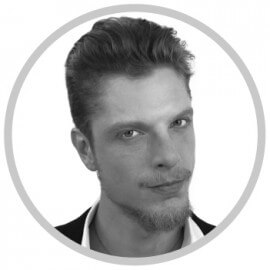 We would like to write for you. Contact us today. We deliver clean, fast work. You can stop searching: BrainHive is the right partner for you. Competent, affordable and flexible, we are your preferred pick throughout all industries and four continents. You can reach us via phone, mail or our contact form. If you want us to call you back, just give us your number and we will call you as soon as possible.
We would like to write for you. Contact us today. We deliver clean, fast work. You can stop searching: BrainHive is the right partner for you. Competent, affordable and flexible, we are your preferred pick throughout all industries and four continents. You can reach us via phone, mail or our contact form. If you want us to call you back, just give us your number and we will call you as soon as possible.Joachim Jacob Görbert, Director
Reach us 24/7 via
US & International: +1 (844) 434 96 92
Europe & Germany: +49 (0) 6192-703 41 53
Fast & easy: Have us directly calculate an offer for your business plan.
Publications
BrainHive is known through our publications in:
![]()
![]()
![]()
![]()
![]()

BrainHive Consulting is a registered vendor with Unidos, the intelligence and resource sourcing hub of the United Nations.

Recent Posts
- ERP Software Startup Business Plan Sample 22. March 2023
- Eco Event Planning: How Rainbow Gatherings are Organized 5. April 2019
- BrainHive on Quora: Giving Free Advice to the Community 21. January 2019
